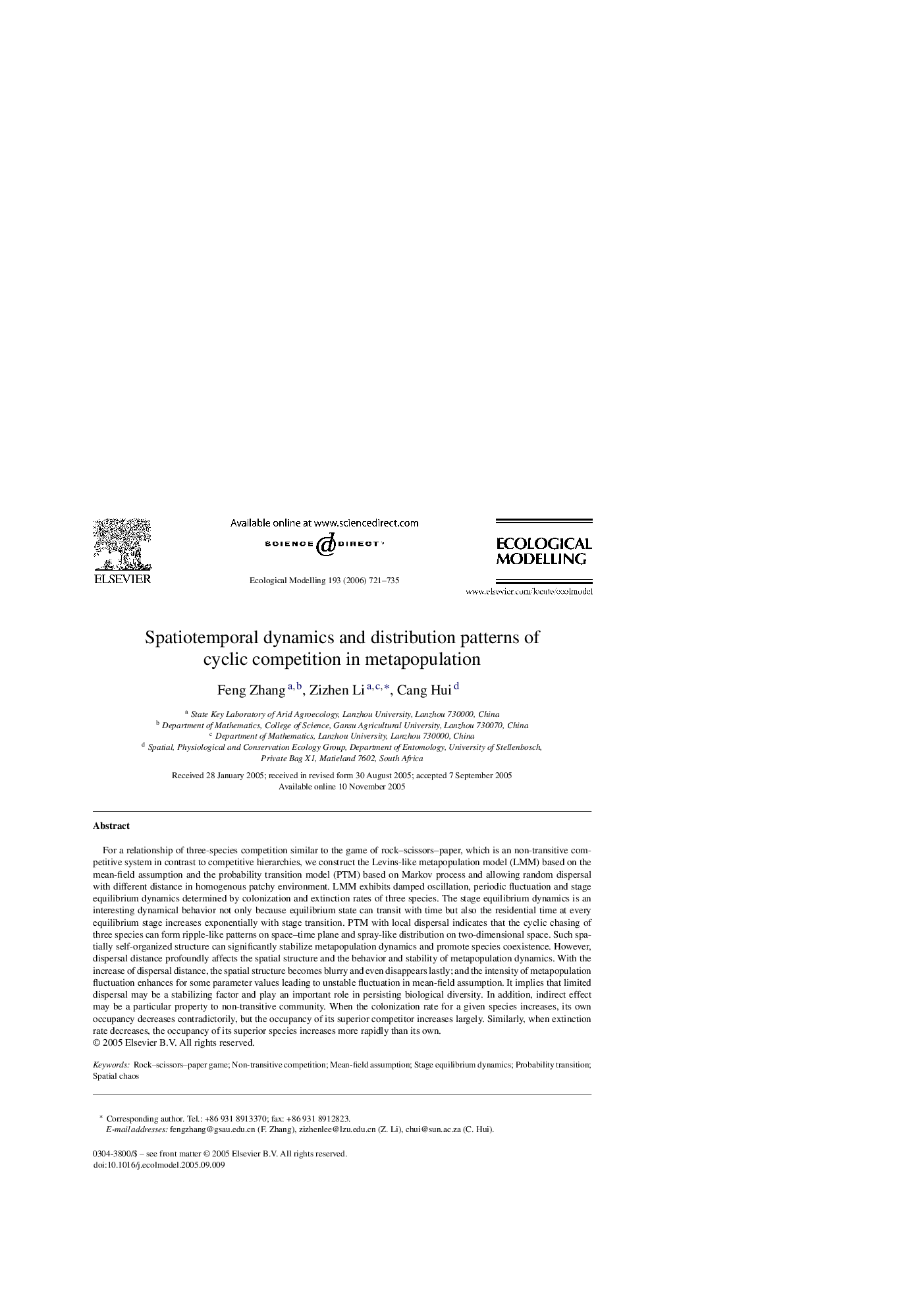| Article ID | Journal | Published Year | Pages | File Type |
|---|---|---|---|---|
| 4379269 | Ecological Modelling | 2006 | 15 Pages |
Abstract
For a relationship of three-species competition similar to the game of rock-scissors-paper, which is an non-transitive competitive system in contrast to competitive hierarchies, we construct the Levins-like metapopulation model (LMM) based on the mean-field assumption and the probability transition model (PTM) based on Markov process and allowing random dispersal with different distance in homogenous patchy environment. LMM exhibits damped oscillation, periodic fluctuation and stage equilibrium dynamics determined by colonization and extinction rates of three species. The stage equilibrium dynamics is an interesting dynamical behavior not only because equilibrium state can transit with time but also the residential time at every equilibrium stage increases exponentially with stage transition. PTM with local dispersal indicates that the cyclic chasing of three species can form ripple-like patterns on space-time plane and spray-like distribution on two-dimensional space. Such spatially self-organized structure can significantly stabilize metapopulation dynamics and promote species coexistence. However, dispersal distance profoundly affects the spatial structure and the behavior and stability of metapopulation dynamics. With the increase of dispersal distance, the spatial structure becomes blurry and even disappears lastly; and the intensity of metapopulation fluctuation enhances for some parameter values leading to unstable fluctuation in mean-field assumption. It implies that limited dispersal may be a stabilizing factor and play an important role in persisting biological diversity. In addition, indirect effect may be a particular property to non-transitive community. When the colonization rate for a given species increases, its own occupancy decreases contradictorily, but the occupancy of its superior competitor increases largely. Similarly, when extinction rate decreases, the occupancy of its superior species increases more rapidly than its own.
Keywords
Related Topics
Life Sciences
Agricultural and Biological Sciences
Ecology, Evolution, Behavior and Systematics
Authors
Feng Zhang, Zizhen Li, Cang Hui,
